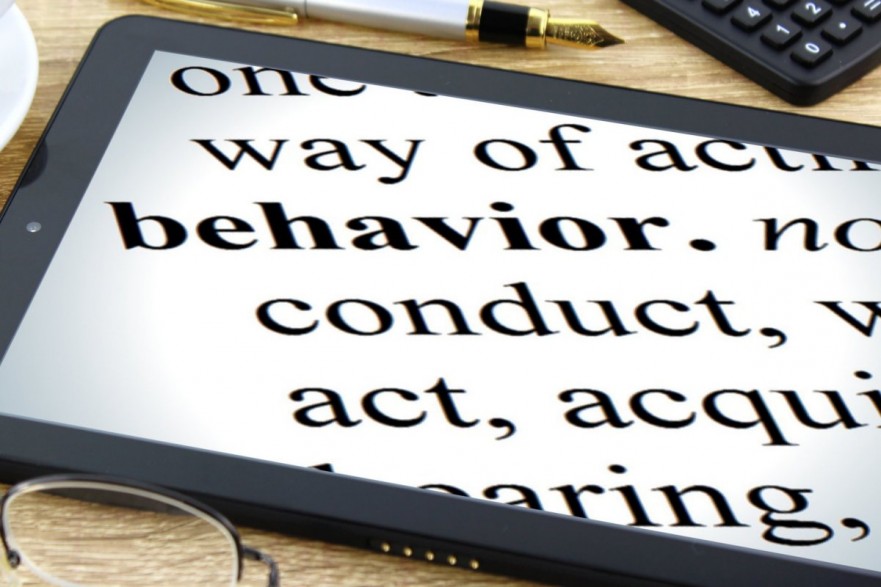As a preschool special education teacher, I think about behavior—A LOT! In my classroom, behavior is communication and my students are learning to communicate effectively. This leads to many interesting moments! When there are behavior “problems,” I don’t blame kids and I don’t blame parents. I take a long, hard, reflective look at myself as their teacher: my instruction, my accommodations, my environment, my words, my body language, and my strategies. I’ve learned that my students are very responsive to my reactions, so I choose my reactions carefully. I believe it’s my responsibility to design a classroom environment with positive behavior supports so my students can be successful no matter what their challenges may be. This attitude helps me focus on the things I can control in my classroom—and take intentional steps toward cultivating the best possible days for all my students.
All that being said—behavior is HARD! There are totally days when the inner me is totally losing my mind while the outer me is staying calm and collected. I love hearing what other experts say about behavior, so I especially enjoyed some recent interviews during an online summit called “Be The Best Parent You Can Be” (hosted by Jeanne-Marie Paynel). The summit was geared toward parents, but I found some great words of wisdom for teachers when I watched the interviews with Lynne Kenney, Casey O’Roarty, Tina Payne Bryson, and Kevin Geary. I thought the most important commonality in all their interviews was the focus on developing compassionate, caring relationships with kids by treating them with respect and dignity during behavior conversations. I wanted to share some things in this post that are still resonating with me today.
Kevin Geary asked a really important question: If kids had other (safe) choices besides being with you, would they stay with you? Of course, most teachers want to immediately say “Yes, of course!” but I thought Kevin did a great job of explaining this point. He talked about how adults form voluntary relationships with other adults and offer each other kindness and grace to maintain the relationship. He suggested that kids don’t always get this same grace and kindness from the adults in their lives. For example, he talked about how an adult might let a willful, protesting child leave her jacket at home—and then criticize her for being cold later by saying, “I told you to bring a jacket.” Instead he suggested, “Just bring the jacket! Offer it when the child gets cold like an adult would offer an extra jacket to a cold friend.” He talked about the importance of being the child’s teammate who always has their back—even when the child isn’t making the best choices. I really love this idea because it helps me think from the child’s point of view when I’m coaching about behavior. It helps me choose my words and responses very carefully because I want the kids to CHOOSE ME every day—even on their hardest days. Casey O’Roarty talked about how we are “always extending an invitation” through our behavior and language with kids. When I’m making teaching decisions, I want to extend an invitation that treats kids with grace and dignity to show every child that we’re on the same team and I’ve got their back.
Casey O’Roarty also talked about the long process it takes kids to learn self-regulated behavior. She compared this to learning to walk and said that we should have the same patience. She mentioned that we criticize children’s behavior with phrases like, “Why did you do that? I just showed you what to do.” Yet, we don’t discourage kids learning to walk by saying, “I just showed you how to walk. What’s the problem?” I really loved this comparison between walking and self-regulated behavior. As a preschool teacher, it helps me keep things in perspective and celebrate the small steps of behavior development instead of getting discouraged about the long process and setbacks along the way.
Tina Payne Bryson shared some brain research that shows kids’ brains develop best when they have secure attachment experiences that include feeling safe, seen, soothed, and secure. I think it’s important to develop a classroom community that provides these essential characteristics. Tina talked about how the brain can only be in two states: receptive or reactive—and she cautioned adults from pushing children into reactive states by punishing them or over reacting after a behavior “problem.” Instead, she suggested connecting with the child through calm, positive dialogue so the child feels receptive to the learning opportunity and gains skills they were missing. Lynne Kenney offered a great phrase to use for connecting with kids who are showing “over-the-top” behaviors. She said we should pull them close and say, “Beautiful child, how can I be there for you today?” Isn’t that a great phrase? I’ve actually used this in my classroom a couple of times and had good results. Phases like this turn angry children into listening children. And when kids are listening, they are ready to learn.
Kevin Geary talked about how all humans have the common need for validation, empathy, and connection—and how our physical, mental, and emotional resources vary every day. I’ve found that coaching behavior can be exhausting, but the changes are so incredibly rewarding! Above all, I’ve learned that I can’t ever take behavior personal. I believe that kids are doing the best they can given the skills and resources they have at the moment. And if their skills and resources need some work—that’s exactly why they have me on their team!
Image credit: http://www.thebluediamondgallery.com/dictionary/behavior.jpg










Comments 4
JESS!!! You have just rocked my world. “Beautiful child, how can I be there for you today?” As soon as I read those words, I thought of a student in my life who NEEDS to hear this from me. I occasionally have trouble dealing with angry and disruptive adolescents but I just know this is what they need to hear. Your advice and words of wisdom are spot-on, as usual.
Yay! I have thought about those words so much since I heard them. They are the essence of what I was always trying to say to kids–but I have never heard or used those exact words before. I know I will use them for the rest of my days teaching (and probably a lot as a mom, too!) So glad that they resonated with you as well
Thank you Jess. As a mother I could not articulate these thoughts until reading (and listening) your blog. You have nailed down what I have had inklings of over the last 10+ years with my own child. Would she choose me if she could? I had data that told me if my students chose me, or chose to not be in my room, but once they were there, I wanted them to WANT to be there. I don’t think I did enough and I see that now. This reminds me of something I learned from Dr Douglas Fisher this weekend, we don’t reprimand a child for not knowing how to read, we teach them. We don’t reprimand a child for not knowing how to do math, we teach them. Why then do we reprimand for poor behavior before we teach children the right behaviors. Teaching skills, including behavior, is not a one and done concept.
Thank you for bringing mindfulness to the fact that our students, our children, need some of that compassionate love that we would give any friend in need.
So glad that these points resonated with you as well I still think about them often myself–and imagine they will stick with me for many, many years as a teacher and parent.
I still think about them often myself–and imagine they will stick with me for many, many years as a teacher and parent.